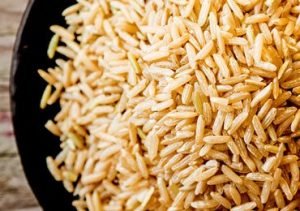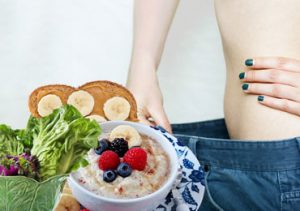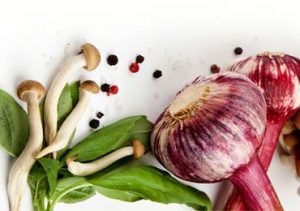When it comes to salt intake, it is advisable to have less. Salt contains sodium and we tend to have 50% more than the recommended salt intake which is dangerous. Sodium can increase the blood pressure levels that can affect the kidney causing to the extent of kidney failure. Salt is always in the higher range in pickles, papads, sauces, salad dressings, packaged meals and even in ready to eat products. The Dietary Guidelines have recommended reducing the sodium intake by 2,300 mg per day or 1,500 mg per day if you are above 50 years of age or having diabetes, hypertension and chronic kidney conditions. If you need to know the household measure a teaspoon of salt per day is ideal. Let us know tips to reduce salt intake. These tips to reduce salt intake will surely help you to live a healthy lifestyle.
Tips To Reduce Salt Intake
1. Take In Charge of The Kitchen
Cook your own meal. Choose ingredients than are available in natural state rather than foods that are processed or prepackaged or ready to eat. In case of preparing pizza, prepare the toppings with tomatoes, bell peppers, broccoli and onions rather than using pizza toppings or spreads. These toppings contain sodium in higher amounts.
Take a look at what are the causes of malnutrition, effects and prevention!
2. Make A Point To Read The Nutrition Label
You should make a point to read and compare the nutrition labels while buying everyday food items. By checking the labels and choosing the foods lower in salt can help in cutting down the salt intake. Different brands of the same food have different levels of sodium. Always pick up fresh and frozen foods that is not dipped in sodium solution. Check out the fine prints of the label for ‘saline’, ‘broth’ or ‘sodium solution’. Here is a guide to know the sodium content in packed foods;
If a product claims to be sodium free or no sodium —– it has less than 5 mgs of sodium.
If a product claims to be very low sodium—————–it has less than 35 mgs of sodium
If a product claims to be low sodium ———————-it has less than 140 mgs of sodium.
Sodium can be written in different names in the ingredient list of the product like monosodium glutamate or MSG, baking powder or baking soda, sodium nitrate and sodium hydroxide. If sodium word is written on the first few ingredients in the list, it is to be considered that this product is quite high in sodium.
3. Go Natural
Mother Earth has provided us with so many natural foods that we don’t need to get dependent on processed foods. Eat fresh foods and do not keep the food for a longer period of time in the fridge. Prefer fresh cuts of meat and chicken that contain sodium but in lesser quantities compared to the bacon or ham that is been processed with hidden extra sodium. You can also choose frozen or canned foods that is low in sodium and that has been labeled as ‘fresh frozen’ that does not contain seasoning or sauces. Prefer cucumber sticks or carrot sticks dipped in low fat yogurt rather gorging on chips or fried snacks for snacks.
Let’s get started with top 7 shocking nutrition and food facts!
4. Add More Spices – Tips To Reduce Salt Intake
Never always feel that salt is the only ingredient that can improve the taste of the foods. You can add spices and herb that can enhance the flavor and taste of the food and reduce the intake of salt. We need to be creative and try to explore new avenues of adding flavor. Add ons like chili, lemon, tamarind or ginger can provide flavor and thus drastically cut down the salt intake. We know foods without salt may taste bland but never lose hope it will just take few weeks for the taste buds to develop.
| Spices Used | Foods on which it can be added |
| 1. Allspice
2. Ginger 3. Rosemary 4. Cardamom 5. Garlic 6. Cumin seed powder |
Fish, carrots, peas
Eggplant, Cauliflower, green beans, chicken Added in marinades Sprinkled on fruits and baked goods Soups and dips Curries and dry roasted vegetables |
Don’t miss these tips to lowering high blood pressure.
The juices of lemon, lime and even oranges and grapefruit can bring out a tangy flavor without the need to add salt. If possible, use freshly squeezed lemon on roasted vegetables along with a little bit of peel on roasted veggies and salads. You won’t believe the vegetables tastes so good without the need of salt.
Always purchase spices and herbs in small batches to retain its freshness. If you are adding spices in powder form, add at least 15 minutes before the end of the cooking and if you are adding spices in whole form add it at least 1 hour before the end of the cooking. If using dried herbs, crush the herbs before adding it into the food.
5. Eating Out
Dining out and checking on the salt intake becomes a little difficult as you not sure of the ingredients added. The worst ones are fast food outlets as they just need to assemble pre prepared food and hence very difficult to order for less salt or low sodium foods. Of course you can check the websites of the restaurants or ask for menu cards for low sodium options.
Other restaurants also rely on high sodium sauces and dressings, hence it is always essential to have a portion control and order foods as plain as possible without too much of dressings or sauces. You can even ask questions about how the food is prepared and also about the vegetables, spices, marinades, sauces and dressings. If you are in the restaurant where food is prepared according to the cook to order, they will surely cater to your request of lesser salt. Always prefer basic foods that are grilled or steamed. Taste your food before using the salt shaker and if possible use salt shaker sparingly. Check on cheese, olives, and croutons in your salads and ask for salad dressings on the side. Order for a fruit or a fruit salad without toppings for dessert.
Let’s know quick facts about ‘nutrients’ every woman must know!
There are many salt substitutes available in the market that replaces some or all of sodium with potassium. Most of them can try this unless you have a medical condition like kidney disease. You need to consult your doctor about whether salt substitutes are good for you.
I know we are so used to adding salt into the food for better taste that the thought of cutting down the salt intake make us feel bland and tasteless. As you reduce the salt in your food gradually, you will start enjoying the true flavors of the food and your taste buds will adjust to prefer less salt. Prefer natural products rather than processed or prepackaged products. Try these tips to reduce salt intake and see how it feels.



















Very Helpful Post Keep Posting